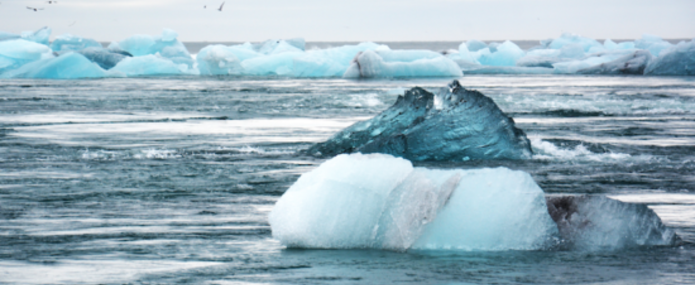Ocean advocates received an early Christmas present last year. On 20 December, the United States and Canada announced a series of measures to protect Arctic waters. This joint initiative must be put in specific national contexts: Barack Obama is now seeking to consolidate his environmental legacy before his departure from the White House, while Justin Trudeau, who has been in office for a year, is endeavouring to position Canada on the international environmental scene. However, the protection of the Arctic region requires broader multilateral cooperation, which has yet to be strengthened.
The United States and Canada working together to protect the Arctic and defend its “irreplaceable values”: this is the vision that emerges from reading the joint statement from Washington and Ottawa.
Protect Arctic : ban on any new oil and gas drilling
The first spectacular announcement was the ban on any new oil and gas drilling. Canada is thus permanently banning all new drilling for oil and gas across its Arctic waters, a ban to be reviewed every five years. For his part, Barack Obama used the 1953 Outer Continental Shelf Lands Act[i] to protect 31 canyons in the Atlantic Ocean and to prohibit any new oil and gas development in the Arctic off the coast of Alaska, thus protecting the Chukchi Sea and a large area of the US waters of the Beaufort Sea. Coming a few weeks before the end of his final term, this decision by Barack Obama was the subject of much discussion in North America. For advocates of the marine environment, it felt like another victory, following the extension of the Papahanaumokuakea reserve off the Hawaiian coast.[ii] For others, it represented an obstacle to the future policies of Donald Trump, who has never concealed his wish to develop offshore operations. While the new president’s ability to unilaterally repudiate these bans is under debate, experts believe that Obama’s decision will nevertheless be difficult to challenge. Beyond this issue that has attracted the attention of the media, Barack Obama and Justin Trudeau also announced other initiatives that deserve special attention. The two countries are committed to strengthening the resilience and well-being of Arctic communities, with Canada announcing in particular the establishment of a new policy developed together with territorial governments. US and Canadian authorities are also launching a study to identify “sustainable shipping lanes throughout [their] connected Arctic waters” and have promised to reduce the use of heavy fuel oil vessels. The two States reiterated their wish to see a binding international agreement to prevent unregulated fishing on the high seas until a regional fisheries management organization has been established in the region.
Protect Arctic: “Arctic Package”
This is not just a one-off measure; Canada and the United States have proposed an “Arctic Package”. The most emblematic measure, which is the ban on offshore drilling, has been welcomed by many non-governmental organizations (NGOs). The region is indeed highly coveted because it potentially contains nearly 13% of the world’s undiscovered oil reserves and up to 30% for gas reserves. However, to date, drilling in the region has been considerably limited due to technical constraints, the decline in oil prices and competition with shale gas, which is cheaper to exploit. By 2015, for example, only 0.1% of US federal offshore crude oil production came from the Arctic. The American and Canadian bans are therefore only worthwhile if they are to last. In any case, one of their benefits is the establishment of a rule of law that will be difficult to renege on – if not legally, then at least politically.
The announcements on the regulation of maritime transport and the management of fisheries are also interesting, not because they are ecologically decisive at this stage, but because they draw up a road map for the diplomats of the two countries.
Protect Arctic: extending these initiatives to the multilateral scale ?
Indeed, beyond these unilateral measures, Barack Obama and Justin Trudeau’s press release demonstrates a will to extend these initiatives to the multilateral scale. The intention is laudable, but there are still many obstacles. The use of heavy fuel oil for shipping in the Arctic, for example, is already under discussion within the International Maritime Organization, but the debate between the “phase down” (the term used in the US-Canada communiqué) and “phase out”, a term promoted by some NGOs, is far from a settlement. Similarly, while the Arctic Council[iii], expressly mentioned in the communiqué, appears to be the most legitimate forum for addressing regional issues in a concerted manner, its environmental successes to this day remain rather limited. Finally, it is regrettable that the United States and Canada did not go so far as to propose the global regulation of the offshore industry, which today remains the least regulated maritime activity on the international scale.
[i] Outer Continental Shelf Lands Act: https://www.boem.gov/Outer-Continental-Shelf-Lands-Act/ [ii] Following Barack Obama’s decision in September 2016, the area of the reserve increased from 363,000 to 1.51 million km2. [iii] Established in 1996, the Arctic Council brings together Canada, Denmark, the United States, Finland, Iceland, Norway, Sweden and Russia.


